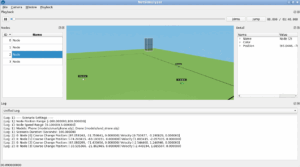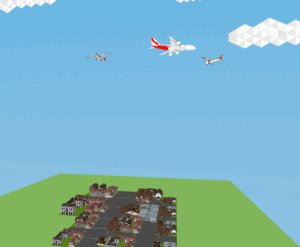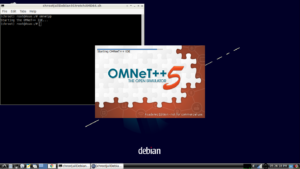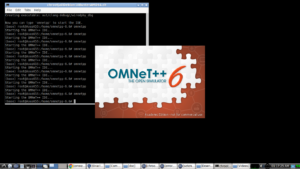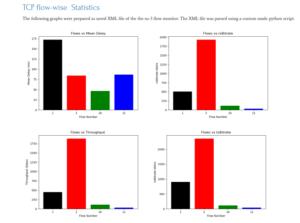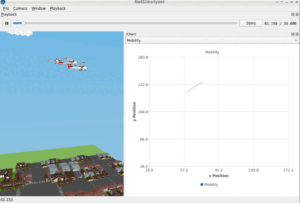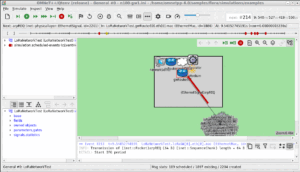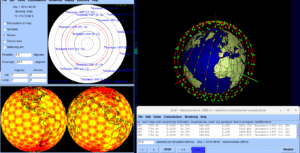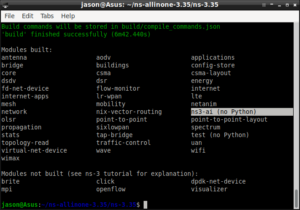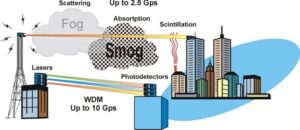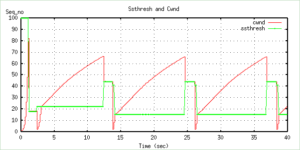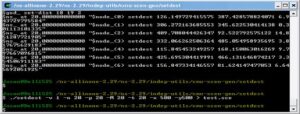This article presents the different aspects of data communication under Satellite networks. It addresses the issues related to delays, obstacles, interference etc.,. perceived at the transport layer. Further, it addresses the problems of routing packets under different kinds of Satellite networks.
Transport Layer Challenges in Satellite Networks
Building upon our previous discussion, let’s specifically focus on the transport layer challenges in satellite network communication:
High Latency:
- Impact on applications: Real-time applications like video conferencing, online gaming, and financial transactions suffer significantly from delays. Even text-based communication can feel sluggish.
- Potential solutions:
- Low-latency protocols: Protocols like QUIC and SCTP are designed for faster connection establishment and improved data transfer with limited back-and-forth communication.
- Streamlining data transmission: Reducing unnecessary headers and optimizing packet sizes to minimize overhead and expedite data flow.
- Forward Error Correction (FEC) codes: Proactively correcting errors on the sender side, reducing retransmission requests and further delays.
Limited Bandwidth:
- Congestion and throughput limitations: With scarce bandwidth, efficiently managing data flow is crucial to avoid congestion and ensure acceptable data throughput for all users.
- Potential solutions:
- Congestion control algorithms: Specialized algorithms adapted to satellite network characteristics, like TCP Slow Start with Adaptive Increase (SSAI) or FAST, to manage data rate and prevent network overload.
- Data compression: Compressing data before transmission minimizes the amount of information sent, maximizing bandwidth utilization.
- Traffic prioritization: Implementing Quality of Service (QoS) mechanisms to prioritize critical traffic like voice calls over less time-sensitive data transfers.
Packet Loss and Errors:
- Data integrity issues: Corrupted or lost packets due to atmospheric interference, weather, or equipment malfunctions can disrupt communication and compromise data integrity.
- Potential solutions:
- Forward Error Correction (FEC) codes: Adding redundant information to data packets allows for errors to be detected and corrected without requiring retransmission, improving reliability.
- Automatic Repeat Request (ARQ) with improved handling: Optimizing ARQ mechanisms to efficiently handle retransmissions without further congesting the limited bandwidth.
- Error mitigation techniques: Employing advanced modulation and coding schemes to enhance signal robustness and reduce susceptibility to interference.
Addressing these transport layer challenges requires a layered approach. Implementing specialized protocols, optimized data handling techniques, and robust error correction mechanisms can significantly improve the performance and reliability of communication in satellite networks. This paves the way for reliable real-time applications, efficient data transfer, and seamless communication even in remote and challenging environments.
IETF transport protocols such as TCP, SCTP, and QUIC are designed to function correctly over any network path. This includes network paths that utilize a satellite link or network. While transport protocols function, the characteristics of satellite networks can impact performance when using the defaults in standard mechanisms, due to the specific characteristics of these paths. The IETF draft[1] presents these issues.
In [2], the advantages and disadvantages of the different approaches in transport layer protocol design are investigated and addressed the ways of performance improvement.
Network Layer Challenges in Satellite Network Communication:
The following are some of the network layer challenges faced by satellite networks:
Dynamic Topology:
- Constantly changing network: Satellites constantly reposition, creating a dynamic network topology that presents difficulties for routing protocols. Finding and maintaining optimal paths becomes a complex task.
- Potential solutions:
- Reactive routing protocols: Protocols like Ad hoc On-Demand Distance Vector (AODV) or Dynamic Source Routing (DSR) dynamically discover and update routes based on network changes.
- Hybrid routing approaches: Combining reactive and proactive elements, like utilizing proactive protocols for core network segments and reactive protocols for satellite connections.
- Mobility management: Specialized mechanisms to track satellite movements and maintain seamless connectivity for mobile users accessing the network.
Complex Routing Issues:
- Choosing the optimal path: The shortest paths may not be ideal due to varying link quality and delays. Factors like bandwidth, latency, and reliability need to be considered.
- Potential solutions:
- Multi-path routing: Utilizing multiple paths for data transmission can improve redundancy and mitigate the impact of link failures.
- Load balancing: Distributing traffic across different paths to optimize network utilization and prevent congestion on specific links.
- Traffic engineering: Proactively configuring network paths to meet specific application requirements and prioritize critical traffic flows.
Security Vulnerabilities:
- Openness and potential weaknesses: Satellite networks can be more vulnerable to attacks like jamming, sniffing, and cyberattacks due to their inherent openness and potential flaws in encryption protocols.
- Potential solutions:
- Robust encryption: Implementing strong encryption algorithms and secure key management practices to protect data confidentiality and integrity.
- Authentication and authorization mechanisms: Ensuring only authorized users access the network and prevent unauthorized access or data manipulation.
- Security monitoring and intrusion detection: Continuously monitor network activity and implement intrusion detection systems to identify and respond to potential security threats.
Interference and Competition:
- Multiple networks in the same frequency band: Interference between competing networks can degrade signal quality and disrupt service.
- Potential solutions:
- Frequency coordination: International agreements and regulations to allocate frequency bands and minimize interference between different satellite networks.
- Advanced modulation and coding techniques: Employing techniques like spread spectrum or directional antennas to improve signal separation and mitigate interference.
- Cognitive radio technologies: Allowing satellites to dynamically adapt their transmission parameters to avoid interference and optimize spectrum utilization.
Limited Quality of Service (QoS):
- Providing differentiated service: Ensuring different types of traffic (voice, video, data) get the required bandwidth and priority can be challenging due to limited resources.
- Potential solutions:
- Traffic classification and prioritization: Identifying and prioritizing critical traffic like emergency calls or medical data transmission.
- Resource reservation and scheduling: Allocating specific bandwidth and time slots for different types of traffic to ensure they meet their performance requirements.
- Differentiated service levels: Offering tiered service plans with varying levels of bandwidth, latency, and reliability to cater to different user needs and budgets.
Addressing these network layer challenges is crucial for building robust and reliable satellite networks. Implementing adaptive routing protocols, robust security measures, efficient interference mitigation techniques, and effective QoS mechanisms can unlock the full potential of satellite communication, enabling reliable connectivity and diverse applications even in remote and challenging environments.
Why MANET routing protocols will not be suitable for Satellite Networks?
While MANET (Mobile Ad-hoc Network) routing protocols have proven effective in terrestrial wireless networks, they face significant challenges in LEO and GEO satellite networks due to several fundamental differences:
1. Dynamic Topologies:
- LEO and GEO networks: Satellites move rapidly in their orbits, resulting in frequent and unpredictable changes in network topology. This requires routing algorithms to quickly adapt to link availability and find new paths without disrupting communication.
- MANET protocols: Designed for more gradual and localized topology changes, often relying on periodic updates or flooding mechanisms. These strategies may not be efficient or scalable in the highly dynamic satellite environment.
2. Long Propagation Delays:
- Satellite links: Inherently have longer propagation delays compared to terrestrial links, due to the vast distances involved. This delay can significantly impact routing performance, especially for time-sensitive applications.
- MANET protocols: Often assume relatively low propagation delays, leading to potential issues like route oscillation and convergence delays in satellite networks. They may not adequately factor in the impact of delays on route selection and maintenance.
3. Limited Bandwidth:
- Satellite links: Typically have more limited bandwidth compared to terrestrial links, due to the constraints of satellite communication technology. This restricts the amount of routing information that can be exchanged.
- MANET protocols: Often rely on frequent control packet exchanges to maintain routing tables and update topology information. This overhead can consume a significant portion of the available bandwidth in satellite networks, reducing efficiency.
4. Energy Constraints:
- Satellites: Have limited energy resources, especially in LEO constellations. Routing protocols should minimize energy consumption for communication and processing.
- MANET protocols: Not always designed with energy efficiency as a primary concern, which could lead to faster battery depletion in satellites.
5. Security Considerations:
- Satellite networks: Vulnerable to unique security threats due to their open nature and potential exposure to malicious actors. Routing protocols must incorporate robust security measures to protect data confidentiality, integrity, and availability.
- MANET protocols: These may not have adequate security features built-in, requiring additional security mechanisms for satellite networks.
While MANET routing protocols offer valuable concepts for distributed routing, they need significant adaptations or specialized designs to effectively address the unique challenges of LEO and GEO satellite networks.
Satellite networks present some interesting challenges for packet networking. The entire topology is continually in motion, with links that are far less reliable than what is common in terrestrial networks. Some changes to link connectivity can be anticipated due to orbital mechanics. The IETF draft[3] proposes a routing architecture for satellite networks based on existing routing protocols and mechanisms, enhanced with scheduled link connectivity change information.
Different Network Topologies of Satellite Networks
While satellites themselves orbit in space, the networks they establish on Earth can take various forms, each with its own advantages and limitations. Let’s explore some of the most common network topologies used in satellite communication:
1. Star Topology:
- This is the simplest configuration, with all ground stations communicating directly with a central satellite hub.
- Advantages: Simple to manage, reliable connections, easy to troubleshoot.
- Disadvantages: Single point of failure (hub malfunction), limited scalability, high cost for multiple ground stations.
2. Mesh Topology:
- Ground stations connect and relay data directly to each other, forming a web-like network.
- Advantages: Decentralized, fault-tolerant (no single point of failure), highly scalable.
- Disadvantages: More complex to manage, potential for higher latency due to multi-hop transmission.
3. Hybrid Topology:
- Combines elements of star and mesh topologies, with some ground stations connecting directly to the hub while others form a mesh network.
- Advantages: Balances scalability and complexity, offers redundancy and flexibility.
- Disadvantages: Requires careful design and configuration to optimize performance.
4. Multi-Satellite constellations:
- Employ multiple satellites in orbit, working together to provide greater global coverage and redundancy.
- Advantages: Wide coverage, improved reliability, and potential for higher bandwidth.
- Disadvantages: High cost to launch and maintain multiple satellites, complex network management.
Beyond these basic topologies, various specialized configurations exist for specific applications. For example, bent-pipe satellites simply relay signals received from one ground station to another without processing them, while VSAT (Very Small Aperture Terminal) networks utilize small, affordable ground stations for wider access in remote areas.
The choice of network topology depends on several factors, including the intended application, desired coverage area, budget constraints, and required level of reliability. Careful consideration of these factors is crucial for building efficient and cost-effective satellite networks that meet the specific needs of users.
In [4], different practical network topologies for satellite networks have been discussed. As mentioned in [4], typically, the network topology is determined not only by the orbital configuration, but also by the network operating mode, desired QoS, and available resource differences between the nodes. If the communication graph is fully connected it can be approximated with a fully connected mesh (Figure b) or, if one satellite is used as a base station (sometimes called the master), with a centralized star topology (Figure a). Another common occurrence is when the satellites are placed into the same orbital plane with separation distances approximately equal to the maximal possible communication range (i.e., a line topology; Figure c). The most common and difficult case is the meshed topology (Figure d), where the graphical representation of the network can change over time.

(a) Star; (b) fully connected; (c) line; and (d) mesh [4].
A recent work [5] investigates the latest existing routing works to tackle the dynamic routing problems in satellite networks. In that paper, the architecture and development of satellite networks are presented and analyzed. The dynamic routing problems in satellite networks are analyzed in detail based on the time-varying network topology. The advanced satellite network routing schemes, including single-layer and multi-layer dynamic routing, are introduced and analyzed.
In [4] the following Single-layer satellite network is described.
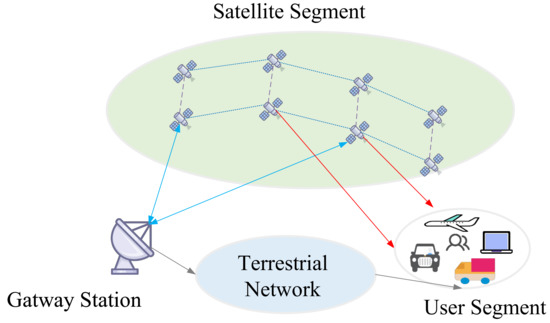
Single-layer satellite networks[5].
Further, in [4] the following Multi-layer satellite network is described.
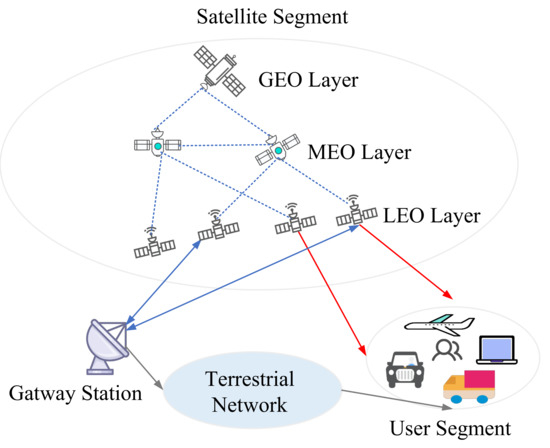
Multi-layer satellite networks[5].
Simulation of Transport and Network Layer Protocols of Satellite Networks under ns-3
Conclusion
Satellite networks offer global reach but face unique hurdles at both the transport and network layers. High latency plagues real-time applications, limited bandwidth demands efficient data handling, and dynamic topologies challenge routing. Security vulnerabilities necessitate robust measures, while interference demands mitigation, and Quality of Service requires clever traffic management. Overcoming these hurdles is key to unlocking the full potential of satellite communication, enabling seamless connections and diverse applications even in the remotest locations. This article tried to introduce some of the transport and network layer issues related to satellite networks and also presented the possibilities of simulating them under ns-3.
References
- https://www.ietf.org/archive/id/draft-jones-tsvwg-transport-for-satellite-02.html
- Carlo Caini et al., Transport layer protocols and architectures for satellite networks, Int. J. Satell. Commun. Network. 2007; 25:1-26
- https://www.ietf.org/archive/id/draft-li-arch-sat-00.html
- Yoon Z, Frese W, Briess K. Design and Implementation of a Narrow-Band Intersatellite Network with Limited Onboard Resources for IoT. Sensors (Basel). 2019 Sep 27;19(19):4212. doi: 10.3390/s19194212. PMID: 31569831; PMCID: PMC6806246.
- Cao, X.; Li, Y.; Xiong, X.; Wang, J. Dynamic Routings in Satellite Networks: An Overview. Sensors 2022, 22, 4552. https://doi.org/10.3390/s22124552

 Discuss Through WhatsApp
Discuss Through WhatsApp
